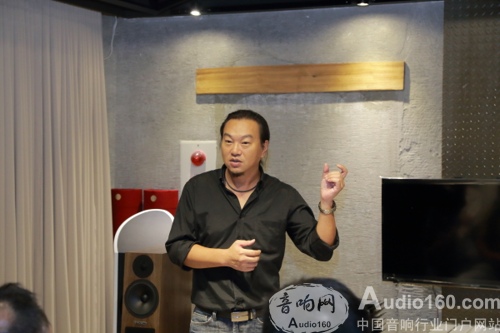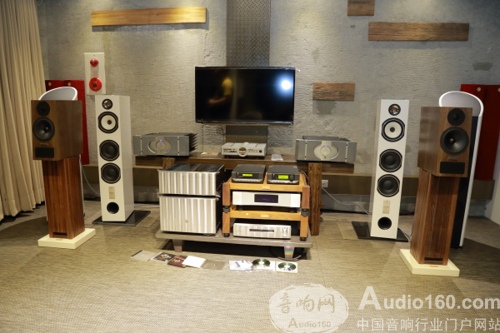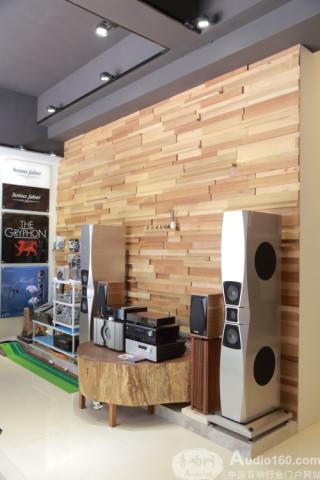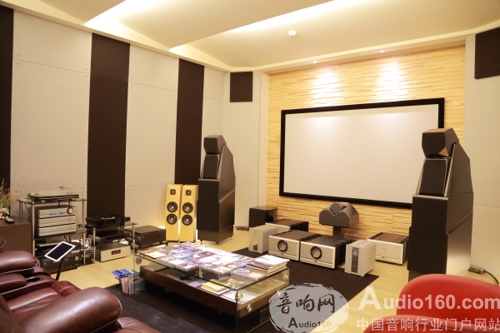
Everyone said that before you learn to tune, you must first learn how to listen. Otherwise, how can you tune even if the sound is not correct? Hsinchu Shengfengqun Audio has recently held a very special "XYZ Three-Axis Listening Method", which was given by Mr. Jiang Xiaodong. Through his many years of experience, he told everyone how to use the easiest way to identify the sound of the system. correct.
Mr. Jiang Xiaodong of Shengfeng Group Audio has more than 20 years of audio qualifications, and there are countless audio cases in his hands. With his experience, even a system with a good price, if it can be tuned according to his three-axis theory, can also issue high-priced systems. A fight of sound. This is why there are so many high-priced equipment on the scene that day, Jiang Xiaodong only selected Cyrus CD i CD and 8 DAC integrated amplifier, coupled with the PMC twenty 22 bookshelf speaker such a mid-priced system to demonstrate.



Jiang Xiaodong opened the emperor and emphasized that it is easy to call up the correct sound by referring to the sound structure of the live performance. He gave a simple example. The lead singer always stood before the orchestra, at the forefront of the stage. The song of the singer is also the main point of the whole song. Therefore, the vocals must be obvious and clear and not covered by the orchestra. With this simple logic, you can find the right sound. The three-axis tuning method is to discover these logics one by one, and to summarize the tuning methods. However, before teaching the three-axis tuning method, we must first know what logic can be followed. This lecture teaches the use of simple logic to define the three-axis listening method and identify whether the system is correct.
To put it simply, the "3-axis listening method" is the easiest way to hear the most correct sound, but not to listen to the sound, so it is not necessary to distinguish whether it is a beautiful sound. It is a "not beautiful voice." How do you listen to the three axes? Jiang Xiaodong first took out a guitar to demonstrate. When he sat playing, the bass string of the guitar (the thicker string) was on, the treble string (the thinner string) was below, he dialed the bass string first, then dialed The treble string, at this point, the position of the bass can be heard slightly higher than the treble, which is the sound distribution of the guitar on the Y axis, which means that if you use your system to replay the guitar solo, you should also I can hear the situation where the bass is on and the treble is under.


What about the X axis? Jiang Xiaodong used the cello as an example. When we face the cello player in front, the cello is played upright. No one should play the cello horizontally. The bass string is on the left side of the listener and the treble string is on the right, so the bass will be left, treble. Right then, this is the X axis. However, there was no cello at the scene, so he did not demonstrate it on the ground.
What about the Z axis? At this time, Mr. Jiang took out another violin and asked a young man to try to pull it. The man is playing in the standing position of the violinist we see in general. At this time, the bass string is behind (for the listener, it is far away), and the treble string is in front (for the listener, it is away) It is closer, so it sounds farther when pulling the bass strings, and the treble strings are closer. This is the Z axis. Or taking the piano as an example, he said that in the concert hall, the piano is placed sideways to the audience. The bass keys are farther and the treble keys are closer, so the bass sounds farther and the treble sounds closer.

Jiang Xiaodong said that as long as the sound system is correctly adjusted, the distribution of the X, Y, and Z axes of the real instrument during live performance can be replayed. By following this principle, you can tell whether your system is correct. He also shared a principle of loudness, that is, in a sound field, the sound is usually small (before), and the sound is large (farer); after the bass, the sound is large, the treble is in front, and the sound is small. For example, in a symphony recording, the tonal drum and brass tube have loudness and low frequency, which are arranged at the end of the orchestra, so the sound sounds farther. On the contrary, the lead singer or violin, with high frequency and small volume, are arranged. Before, so it sounds close to the location. Jiang Xiaodong said that by following these simple principles, you can easily distinguish whether the sound of the system is correct.
After listening, I found out that the system is not correct. What should I do? How can I get the right sound? Jiang Xiaodong sold a Guanzi and said, "Three-axis listening" teaches how to distinguish. As for how to adjust, it will be left to the next three-axis adjustment course.






Sporting a 550mAh battery and direct draw system, the Puff Bar PLUS has enough power to deliver excellent flavor without any charging or complicated settings. Puff Plus has double the PUFFS, making it the longest-lasting disposables out in the market. Just inhale to fire up the pre-filled device. After your PUFF BAR PLUS runs out of juice and/or battery, simply buy a replacement.
Specifications and Features:
- Disposable Device requires No Maintenance, Charging or Refilling
- Pre-Filled: 3.2mL Salt Nic
- Internal Battery: 550mAh
- Pre-charged, Simply puff on the device to activate
- Pre-filled, no need for messy refills
- Salt Nicotine: 5%, (50MG) Salt Nic inside for an accurate cigarette-style throat hit
- Up to 800+ Puffs per disposable, approximately equivalent to 2 pack of cigarettes (40 cigarettes)
Puffs Cartoon Series E-Cigarette,Puff Plus Puff Bar,Puff Series With Safe Ingredients,Disposable Puff Series Vape Pen
Shenzhen Ousida Technology Co., Ltd , https://www.osdvape.com